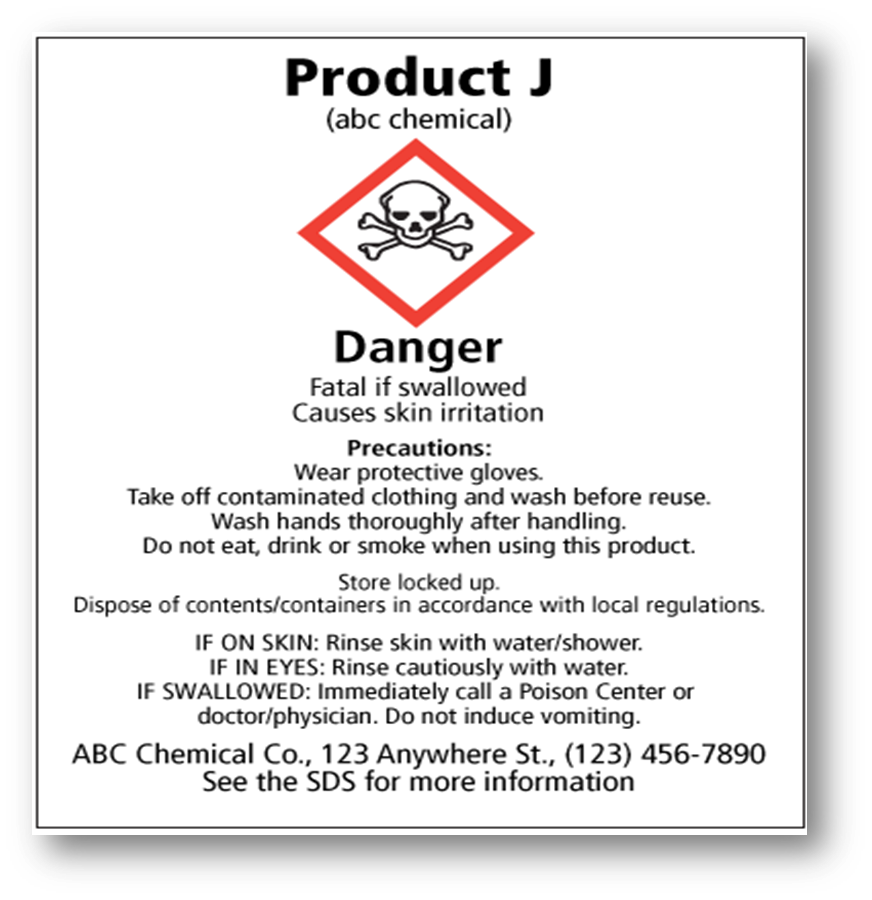 Overview Overview
Manufacturers must label hazardous chemical containers with information that includes potential safety hazards and handling requirements. This example shows information included on labels.
Labeling of secondary containers such as laboratory bottles and vials will be discussed later in this course.
Label Parts
Working our way from the top to the bottom of the label in order:
Product identifier –The product identifier includes the name of the product.
Pictogram – The pictogram is a symbol that illustrates the type of hazard the chemical presents. Below are all nine of the current pictogram options.
Signal word – There are two possible signal words, ‘Danger’ and ‘Warning’. Danger indicates more severe hazards and warning indicates less severe hazards.
Hazard statement – One or more statements assigned to each hazard class and category that describe the chemical’s dangers.
Precautionary statements – Includes recommended measures to minimize exposure to the product.
Supplier identification - Includes the manufacturer’s name and contact information, such as an address.
|